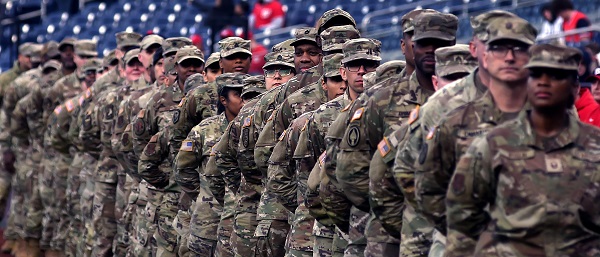Frontier Centre for Public Policy
Canada’s Indigenous burial hoax is still very much alive
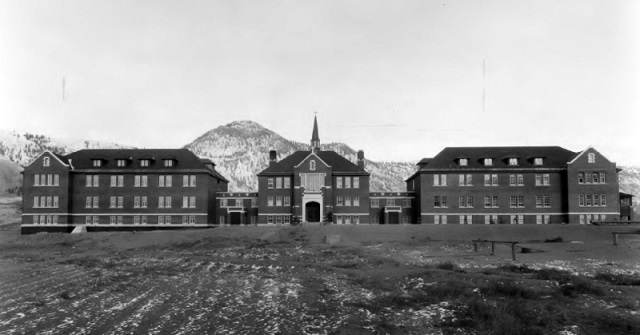
From the Frontier Centre for Public Policy
The Kamloops “confirmation” – growing more inconclusive all the time – consisted solely of signs of sub-surface soil irregularities: GPR cannot detect human or other organic material, and is only reliable in finding graves in known cemeteries.
History shows that many hoaxes, fake news stories, and conspiracy theories have proven nearly unassailable, even when proven false. So far, it seems a British Columbia burial canard will be added to this list.
The assertion that thousands of Indian Residential School children are buried in unmarked graves across the country, many of them victims of genocide, has been bandied about for decades. Its current promotion skyrocketed in mid-2021 following an Indigenous media release that was heard around the world:
May 27, 2021, Kamloops – It is with a heavy heart that Tk’emlúps te Secwé pemc Kukpi7 (Chief) Rosanne Casimir confirms an unthinkable loss that was spoken about but never documented by the Kamloops Indian Residential School. This past weekend, with the help of a ground penetrating radar (GPR) specialist, the stark truth of the preliminary findings came to light – the confirmation of the remains of 215 children who were students of the Kamloops Indian Residential School.
Although this claim and others like it are slowly being exposed as false, most Canadians still believe them.
This assertion is one of the findings of a February 2024 Macdonald-Laurier Institute research report that found “by a 79 to 21 ratio, respondents believed that ‘215 Indigenous residential school children were buried in a mass grave on school grounds in Kamloops, BC,’” a story lacking factual or historical evidence “but which most media and virtually all politicians have been reluctant to contradict.”
The Kamloops Burial Hoax
The Kamloops “confirmation” – growing more inconclusive all the time – consisted solely of signs of sub-surface soil irregularities: GPR cannot detect human or other organic material, and is only reliable in finding graves in known cemeteries.
Still, immediately following the Kamloops announcement, there were angry vigils, public displays of grief and shame, solidarity speeches, promises to revolutionize society, and the burning down of dozens of predominantly Roman Catholic churches.
The furore attending the Kamloops discovery accelerated as later findings were announced in other provinces, with the number of purportedly identified graves soon exceeding 2,000. Frequently heard among activists was the cry that these announcements were proof of a hidden “Holocaust” or “Final Solution” perpetrated against Aboriginal students by Canadians working in residential schools. The Kamloops school was alleged to have been a “concentration camp” and the 2021 “burials” evidence that there had been a horrific crime.
Evidence Challenging the Hoax
Entrenched public opinion on what increasingly looks like a burial hoax was damaged on August 18, 2023, when the 14 closely spaced soil disturbances detected using GPR in the basement of the Roman Catholic church on the site of the former Pine Creek Residential School were found to contain animal bones and debris, not human remains.
These findings were preceded by several other inconclusive discoveries.
In August 2021, a team of researchers in Shubenacadie, Nova Scotia, conducted an excavation at the former Shubenacadie Residential School in search of clandestine burials, but to no avail. Two months later, a search was conducted for unmarked graves on the site of the former Camsell Indian Hospital in Edmonton. The facility treated Indigenous people, many of whom suffered from tuberculosis, and some Indigenous leaders claimed that the dig would uncover patients that had been buried there, but no such evidence was discovered.
One discovery still making headlines is the unearthing of child-sized skeletons in a reputed “mass grave,” most likely the result of repeated accidental excavation and haphazard reburial by community grave diggers in the community cemetery on Alberta’s Saddle Lake Cree Indian Reserve. Without a shred of evidence, community members have attributed the death of some of these children to murder at the hands of a school official that was never reported to the police.
That there are no missing or secretly buried students who attended the reserve’s Indian Residential School is proven by the absence of relatives in the past or present searching for loved ones who never returned home. By comparison, in all of Canada, only two distant relatives have been identified as looking for their ancestors. In both cases, the children’s death certificates were found “buried” in the provincial archives whose records showed they were buried correctly on their home reserves.
Two easily located students’ records are surely vastly different from the “15,000 to 25,000 … maybe even more” children Murray Sinclair, former Chair of the Truth and Reconciliation Commission of Canada, has claimed may be missing.
It is becoming increasingly clear that the Kamloops claim, and the many copycat allegations it fomented, are fallacious. More commentators are awaking to the “mass grave” propaganda, even though the Canadian mainstream media barely responded to the Pine Creek discovery of presumptive graves containing no human remains, an important reason this hoax is still very much alive.
Indigenous Elites Support the Hoax
Among the most prominent of many Indigenous perpetrators of these inflammatory claims of murder, mass graves, and even genocide has been RoseAnne Archibald, former National Chief of the Assembly of First Nations, Canada’s largest and best-known Indigenous lobbying group.
At a July 15, 2021, Kamloops Indian Band public presentation, Archibald maintained that the Kamloops case told the world “how 215 innocent children died and were buried in unmarked graves” and that this “crime against humanity” constituted “genocide.”
Completely ignoring the caution of all the known researchers conducting these band-sponsored GPR searches, Archibald added that “this ground penetrating technology is revealing evidence, undisputable proof, that crimes were committed.”
In an interview broadcast by the BBC on August 4, 2021, Archibald charged that Canada’s Indian Residential Schools were “designed to kill” Indigenous children. “And we are seeing proof of that,” she said. “1,600 children, innocent children, have been recovered so far…. We are going to be in the thousands upon tens of thousands of children found. I am not sure how you can say that the recovery of that many little children does not signify what it is – genocide.”
Chief Archibald failed to mention that not a single child’s body “has been recovered so far” or that three years later, no bodies have been exhumed.
A lack of verified evidence of children buried in unmarked graves, some supposedly after priests murdered them, has done nothing to deter the federal government from funding several lavish programmes meant to continue this effort. One of these initiatives was the August 10, 2021, announcement of the allocation of $321 million to help Indigenous communities search burial sites at former residential schools and to support survivors and their communities.
Such programmes have doubtless hardened the public opinion expressed in the Macdonald-Laurier Institute poll. Allied beliefs discovered by the study are also at work: 54 percent of all respondents consider the legacy of Indigenous colonialization to be a problem today; 55 percent vs. 45 percent believe that Indigenous peoples should have a unique status because they were here first; by 48 percent for to 41 percent against, Canadians believe the harm from Indigenous residential schools will continue rather than be resolved; and 19 percent of Canadians think children at residential schools were “purposefully killed” with another 39 percent saying that children also died of neglect.
But the most critical determinant of the exceptionally high belief in the “killing field” at the Kamloops residential school lies in “political culture in Canada,” according to the study: “Much seems to come down to the culturally left-liberal political culture in Canada. That is, the elite norms that hold sway in the media and among mainstream politicians are predominantly culturally leftist.”
As the report says: “It is well established that the media and politicians can cue the issues they want voters to focus on, making decisions to elevate some questions and ignore others.”
This obvious assertion allowed the Macdonald-Laurier Institute report to argue that:
Canadians’ relatively high trust in institutions and cultural elites grants considerable latitude to them to frame the issues that people talk about while neglecting other questions…. There is no better illustration of this than the Kamloops mass graves question, where the code of silence practiced by the media and mainstream political parties has resulted in a clear majority of the public believing this false account.
On the Indigenous side, the Kamloops discovery, and its promise of lots of money, quickly unleashed a flood of similar GPR searches across Canada. To date, the unmarked graves are presumed to hold the remains of mainly unknown and unaccounted for individuals, primarily children, at 26 sites that have been identified since 1974[RC1] .
The allocation of funds to search for graves was followed in June 2022 by appointing an investigator to work with Indigenous communities and the government to propose changes in federal laws, policies, and practices related to unmarked graves at residential schools.
Kimberly Murray, former Executive Director of the Truth and Reconciliation Commission of Canada, was given a two-year appointment as Canada’s “independent special interlocutor for missing children, unmarked graves, and burial sites associated with the Indian Residential Schools.”
Murray’s appointment was simply one part of a campaign, whether deliberately organized or not, to label Canada as a genocidal country long engaged in the systematic murder of Indigenous children whose remains were dumped into mass graves.
Attempts to Stop Hoax Challengers
On June 16, 2023, Murray released an interim report arguing “urgent consideration” should be given to legal mechanisms to combat what activists have termed “residential school denialism.”
Unsurprisingly, her “opening words” in the report stated:
… my role is to give voice to the children. It is not to be neutral or objective – it is to be a fierce and fearless advocate to ensure that the bodies and Spirits of the missing children are treated with the care, respect, and dignity that they deserve” even if that “conflicts with my responsibility to function independently and impartially, in a non-partisan and transparent way.
This attack on the fundamental precepts of objective search for truth based on reason, logic, and scientific evidence rooted in a scientific paradigm that clashes with Indigenous ways of knowing gave her leave to label genocide denial as an “attack” on her version of the truth whenever there were announcements of the discovery of possible unmarked graves.
Moral certainty based on Indigenous ways of knowing, not objective evidence based on science, allowed Kimberly Murray to state that the Canadian government has a role in combatting “denialism,” an inflammatory distortion of what is simply scientific scrutiny, by giving “urgent consideration” to the legal tools that already exist to address the problem, including civil and criminal sanctions.
“They have the evidence. The photos of burials. The records that prove that kids died. It is on their shoulders,” Murray told a crowd gathered on the Cowessess Indian Reserve in Saskatchewan on June 16, 2023.
But there is no photographic evidence of children buried beside the shuttered Kamloops Indian Residential School nor at any of the other former Indigenous schools in Canada.
The only photographic evidence shows typical church burials and thousands of schoolchildren engaged in everyday activities. As for the records, they reveal that the few residential school children who died at the schools were buried in school cemeteries beside school staff members or the nearest reserve cemetery. But most deceased children were interred on their home reserves. All of them received a proper Christian burial after they died, most succumbing to contagious diseases like tuberculosis over which Indigenous people had little natural immunity.
Several of those labelled denialists have argued that there are few missing students, only missing records about their school attendance and death. On March 21, 2023, Murray inadvertently confirmed this assertion in her testimony before the federal government’s Standing Senate Committee on Indigenous Peoples when she said:
The family doesn’t know where their loved one is buried. They were taken to a sanatorium, an Indian residential school. They were just told … that they died. I can get the name of that [missing] individual, I can log into the National Centre for Truth and Reconciliation, find the name of the student, find a record, which will lead me down to another record, which will lead me to Ancestry.com. Why are families having to go to my office to find the death certificate of their loved one on Ancestry.com when the provinces and territories won’t just provide those records?
And then those records will lead you to where they’re buried, hundreds of miles away from their home community. We are now seeing families going to cemeteries. I get this a lot. The children aren’t missing; they’re buried in the cemeteries. They’re missing because the families were never told where they’re buried. Every Indigenous family needs to know where their child is buried. When we find that, and we know that they’re going to have a little bit of closure now, they know the truth and they have some answers, that’s what keeps us going. [emphasis added].
Even though there is little evidence that thousands of children’s deaths were not reported to their parents, and lots of evidence that this is not true, including the refusal of the National Centre for Truth and Reconciliation to remove the names of children whose cause of death and place of burial have been found, from its Memorial Register, a list now totalling over 4,100 named and unnamed “children who never returned home from residential schools.”
Murray’s statement contradicts the established public narrative about missing children. None of these facts have ever been communicated to the public by the mainstream media.
The latest anti-denial effort emanated from the Canadian Senate Standing Committee on Indigenous Peoples, which released a 30-page report on July 19, 2023, titled “Honouring the Children Who Never Came Home: Truth, Education and Reconciliation.” The study recommends “that the Government of Canada take every action necessary to combat the rise of residential school denialism.”
According to lawyer John Carpay, president of the Justice Centre for Constitutional Freedoms:
The use of state resources to promote one opinion on a scientific or historical matter is nakedly totalitarian. Apart from that, the senators’ aggressive language calling on government to “take every action necessary” suggests that it would be okay for the government to punish the likes of Michelle Stirling, Mark DeWolf, and others who dare to disagree with the dominant narrative.
The report fails to define “denialism” yet claims it “serves to distract people from the horrific consequences of Residential Schools and the realities of missing children, burials, and unmarked graves.” This omission suggests that “denialism” means disagreeing with the dominant narrative that Indian Residential Schools were houses of horror marked by racism and genocide.
Decades of an Aboriginal blood libel assertions hang over all these claims, with an army of activists and their supporters acting as its eager propagandists. It is long past time to find the underlying cause of this fake news by exhuming the reputed unmarked graves and identifying any remains they might contain. If that never happens, Canadians will be paying vast amounts forever to keep this hoax about missing and murdered Indigenous children alive.
Hymie Rubenstein is editor of REAL Indigenous Report and a retired professor of anthropology, the University of Manitoba.
armed forces
Canada At Risk Of Losing Control Of Its Northern Territories

From the Frontier Centre for Public Policy
By Gerry Bowler
Canada has left the North wide open to foreign powers eager to grow their Arctic foothold
Canada is in danger of losing the Arctic because Ottawa has ignored the North for far too long.
The Canadian North makes up 40 per cent of our land mass and includes more than 19,000 islands in the Arctic Archipelago. Yet only about 120,000 people live across this enormous stretch of wilderness. Canada took control of the region in the late 19th century through territorial transfers from the Hudson’s Bay Company and the British Crown, one of the largest land transfers in history.
For decades afterward, the North received little federal attention. The Second World War briefly changed that, prompting construction of the Alcan Highway to Alaska and bringing new airfields and telephone lines.
The Cold War, along with the threat of Soviet bombers crossing the Pole, led to multiple radar lines. Still, Prime Minister St-Laurent admitted in the 1950s that Canadian governments had treated the North “in an almost continuing state of absence of mind.”
John Diefenbaker’s Progressive Conservative administration tried to reverse that neglect. In 1958, he told a Winnipeg audience: “I see a new Canada—a Canada of the North! … We intend to carry out the legislative program of Arctic research, to develop Arctic routes, to develop those vast hidden resources the last few years have revealed.”
Plans for a research and industrial city in Frobisher Bay, new roads and railway lines and wide-ranging surveys were ambitious but ultimately unaffordable. In the years that followed, both Liberal and Conservative governments again set northern development aside.
Foreign interest, however, continued to grow. The Canadian Security Intelligence Service recently reported Russian and Chinese attempts at influence and subversion in our northern territories.
American governments over the past 20 years have shown serious interest in the region’s resources, which include significant oil, gas and mineral deposits, along with control of the Northwest Passage, a shipping route becoming increasingly accessible as Arctic sea ice recedes.
Canada considers those waters national; the United States, the European Union and at times China argue it is an international strait.
For all practical purposes, Canada has what amounts to no meaningful presence north of the tree line, leaving the field open to countries with far more ambition and far better-equipped forces.
Canada is in no position to defend its claims. We have no icebreakers capable of operating through the Arctic winter. We have no submarines that can work under the ice cap. We have no permanent air base for fighter jets.
And to cover two million square kilometres of Arctic territory, we have only 300 troops stationed there. The chance they could detect, let alone repel, a serious intruder is essentially zero. Without these capabilities, Canada cannot properly monitor activity in the region or enforce its sovereignty claims.
In the last federal budget, Ottawa announced a $1-billion Arctic infrastructure fund for new airports, seaports and all-season roads. Our foreign affairs minister has urged NATO to pay more attention to the Arctic, saying it “must be an organization not only that focuses on the eastern flank, but also that looks north.”
These steps are gestures, not strategy. Canadian governments excel at promises but struggle with procurement, and the idea that European allies might fill the gap, considering their weak response to Russia’s assault on Ukraine, is unlikely.
Our northern territory is under threat. We must use it or lose it.
Gerry Bowler is a Canadian historian and a senior fellow of the Frontier Centre for Public Policy.
Crime
How Global Organized Crime Took Root In Canada
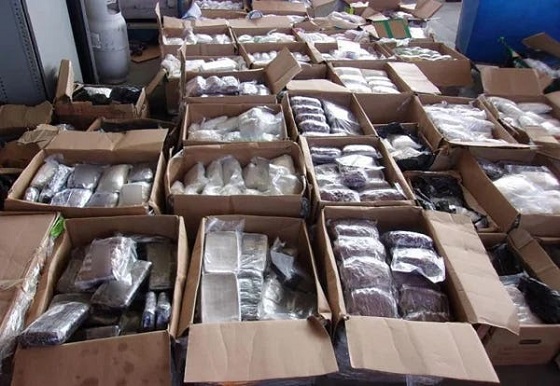
From the Frontier Centre for Public Policy
Weak oversight and fragmented enforcement are enabling criminal networks to undermine Canada’s economy and security, requiring a national-security-level response to dismantle these systems
A massive drug bust reveals how organized crime has turned Canada into a source of illicit narcotics production
Canada is no longer just a victim of the global drug trade—it’s becoming a source. The country’s growing role in narcotics production exposes deep systemic weaknesses in oversight and enforcement that are allowing organized crime to take root and threaten our economy and security.
Police in Edmonton recently seized more than 60,000 opium poppy plants from a northeast property, one of the largest domestic narcotics cultivation operations in Canadian history. It’s part of a growing pattern of domestic production once thought limited to other regions of the world.
This wasn’t a small experiment; it was proof that organized crime now feels confident operating inside Canada.
Transnational crime groups don’t gamble on crops of this scale unless they know their systems are solid. You don’t plant 60,000 poppies without confidence in your logistics, your financing and your buyers. The ability to cultivate, harvest and quietly move that volume of product points to a level of organization that should deeply concern policymakers. An operation like this needs more than a field; it reflects the convergence of agriculture, organized crime and money laundering within Canada’s borders.
The uncomfortable truth is that Canada has become a source country for illicit narcotics rather than merely a consumer or transit point. Fentanyl precursors (the chemical ingredients used to make the synthetic opioid) arrive from abroad, are synthesized domestically and are exported south into the United States. Now, with opium cultivation joining the picture, that same capability is extending to traditional narcotics production.
Criminal networks exploit weak regulatory oversight, land-use gaps and fragmented enforcement, often allowing them to operate in plain sight. These groups are not only producing narcotics but are also embedding themselves within legitimate economic systems.
This isn’t just crime; it’s the slow undermining of Canada’s legitimate economy. Illicit capital flows can distort real estate markets, agricultural valuations and financial transparency. The result is a slow erosion of lawful commerce, replaced by parallel economies that profit from addiction, money laundering and corruption. Those forces don’t just damage national stability—they drive up housing costs, strain health care and undermine trust in Canada’s institutions.
Canada’s enforcement response remains largely reactive, with prosecutions risk-averse and sentencing inadequate as a deterrent. At the same time, threat networks operate with impunity and move seamlessly across the supply chain.
The Edmonton seizure should therefore be read as more than a local success story. It is evidence that criminal enterprise now operates with strategic depth inside Canada. The same confidence that sustains fentanyl synthesis and cocaine importation is now manifesting in agricultural narcotics production. This evolution elevates Canada from passive victim to active threat within the global illicit economy.
Reversing this dynamic requires a fundamental shift in thinking. Organized crime is a matter of national security. That means going beyond raids and arrests toward strategic disruption: tracking illicit finance, dismantling logistical networks that enable these operations and forging robust intelligence partnerships across jurisdictions and agencies.
It’s not about symptoms; it’s about knocking down the systems that sustain this criminal enterprise operating inside Canada.
If we keep seeing narcotics enforcement as a public safety issue instead of a warning of systemic corruption, Canada’s transformation into a threat nation will be complete. Not because of what we import but because of what we now produce.
Scott A. McGregor is a senior fellow with the Frontier Centre for Public Policy and managing partner of Close Hold Intelligence Consulting Ltd.
-

 Alberta12 hours ago
Alberta12 hours agoNational Crisis Approaching Due To The Carney Government’s Centrally Planned Green Economy
-
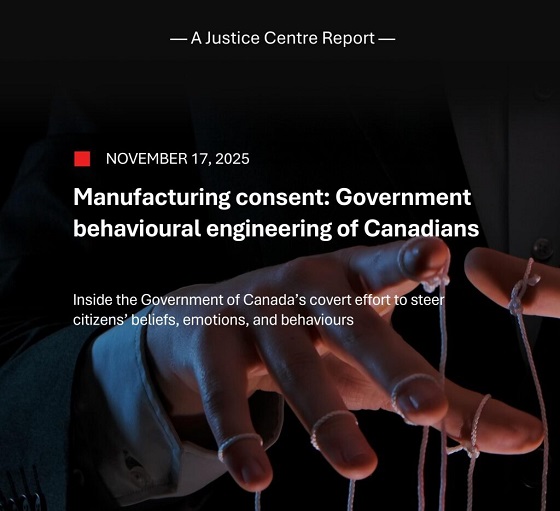
 COVID-191 day ago
COVID-191 day agoNew report warns Ottawa’s ‘nudge’ unit erodes democracy and public trust
-

 Agriculture13 hours ago
Agriculture13 hours agoFederal cabinet calls for Canadian bank used primarily by white farmers to be more diverse
-

 Great Reset11 hours ago
Great Reset11 hours agoCanadian government forcing doctors to promote euthanasia to patients: report
-

 Crime2 days ago
Crime2 days agoHow Global Organized Crime Took Root In Canada
-

 Energy2 days ago
Energy2 days agoExpanding Canadian energy production could help lower global emissions
-
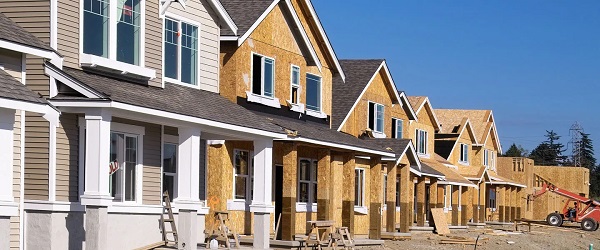
 Business2 days ago
Business2 days agoThe numbers Canada uses to set policy don’t add up
-

 COVID-191 day ago
COVID-191 day agoFreedom Convoy protestor Evan Blackman convicted at retrial even after original trial judge deemed him a “peacemaker”




